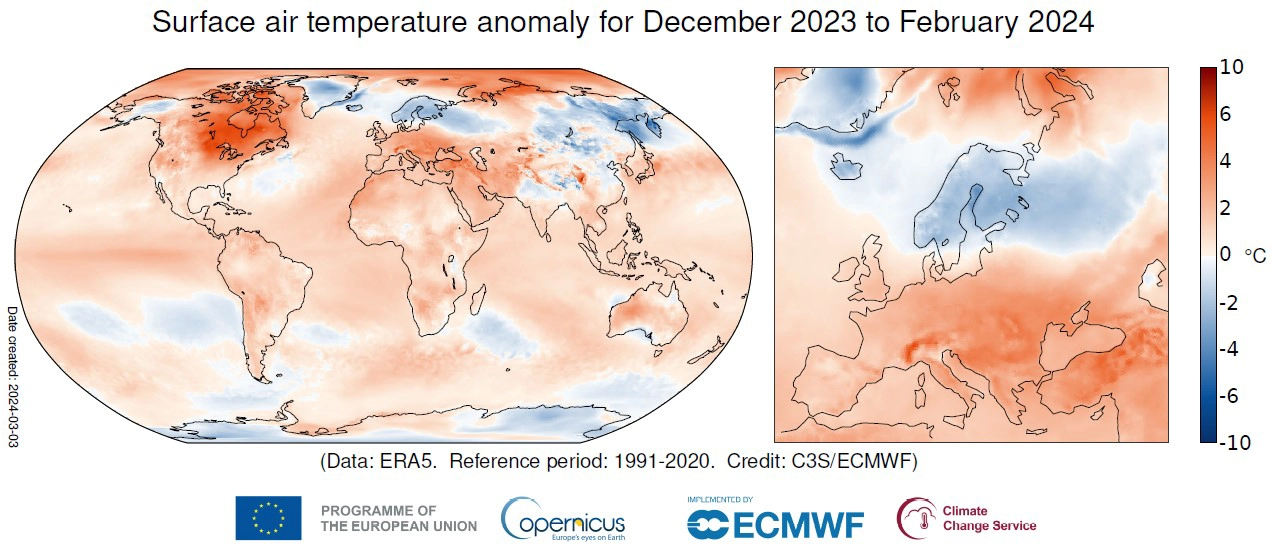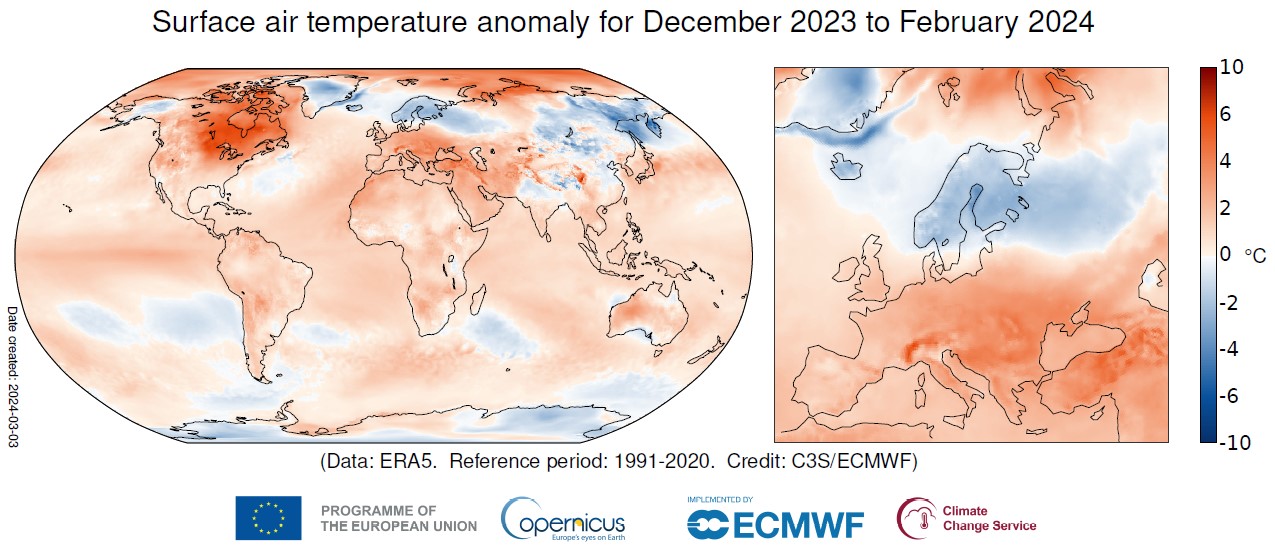
Author: Vasilis Pappas, Senior Meteorologist at MET International
The period between December 2023 and February 2024 (also called boreal winter as opposed to calendar winter being October to December) was marked by the second highest temperature on record for Europe, and the highest on record for the globe. Compared to the 1991–2020 period, the average temperature in Europe was 1.4 °C warmer.
Interestingly, north from 60 N latitude, we had negative temperature anomalies with some lowest temperature records being broken.

Figure 1. Surface air temperature anomaly for December 2023 to February 2024 relative to average for 1991-2020. Data source: ERA5. Credit: Copernicus Climate Change Service/ECMWF.
How did this translate for the European energy markets? The combination of mild weather and weak industrial output led to aggregated European gas demand around 19% below the 2017–2021 average – while natural gas prices dropped from 41€ at the beginning of the winter to 25€ by the end of February 2024. Natural gas storages ended the winter at around 63% in the EU, 2% higher than last winter.
Looking ahead, weather is still expected to play a crucial role in the European energy market. Just like the uncertainty before the winter, the chaotic nature in the atmosphere is there to provide volatility for the wholesale energy prices – through a multitude of ways:
- The increased renewable capacity results in increased volatility in weather-dependent renewable production and, as a result, in the operation strategies of market participants. In the last couple of weeks, rather poor wind power potential for most of Europe (apart from Iberia) has meant that demand for gas-based power production remains solid. How is this expected to play out going forward?
- Heading towards April, snow depth and snow melting are expected – as every year – to play a crucial role in the run-of-river hydropower production, as well as in the filling of the reservoirs. How rapid (or slow) will the snow melting be?
For all these questions, meteorological science is there to provide (some of the) answers. While a deterministic forecast beyond the fifth day in the future is probably not very useful for decision-making, probabilistic forecast has improved a lot in the past few years, providing essential inputs for strategically designed decisions.
On top of that, machine learning models with no physical background, running in some of the most powerful supercomputers of the world, have joined the existing meteorological models in the race of weather forecasting. The results so far have been very promising.
There is a difference between weather forecasting models and climate projection models – and the main difference lies in the source of predictability. In weather prediction, it is required to accurately describe the atmosphere, and then to solve the physical equations. In climate projections, the models are based on assumptions about anthropogenic activity (human activities affecting the environment) and corresponding emissions, land use and other factors. Such climate models are invaluable tools for developing climate scenarios and related policies at international level.
At MET International, we always strive to stay up to date with the latest research and developments in the science of meteorology and climate change.
